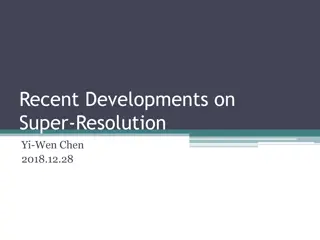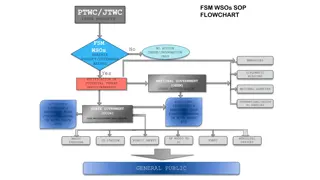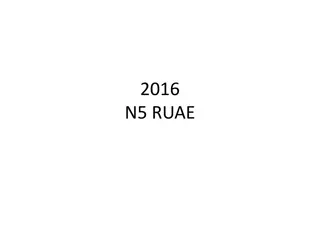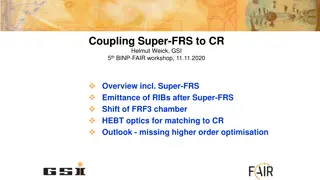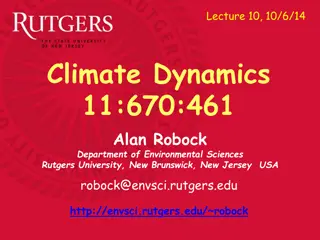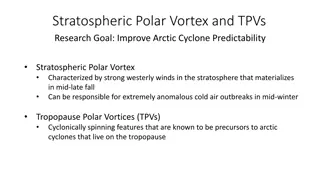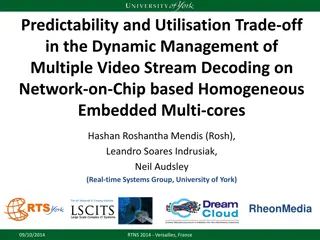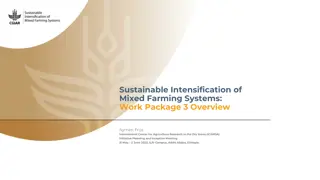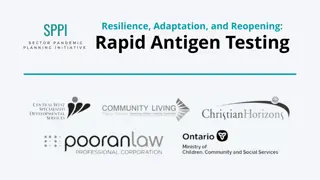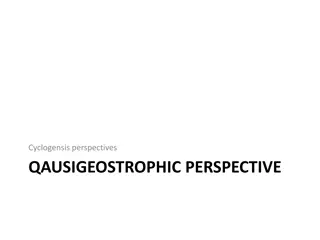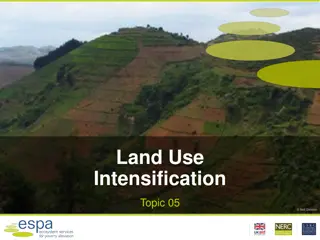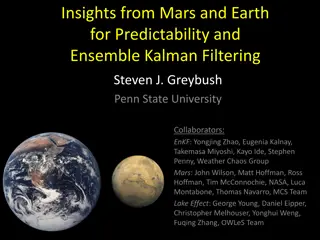Dynamics and Predictability of Super Typhoon Usagi's Rapid Intensification
Study on the rapid intensification of Super Typhoon Usagi in 2013, focusing on the role of moisture, ensemble forecasting, data assimilation, and factors affecting intensity forecasts. The research explores the impact of environmental and internal factors on intensity divergence and timing variation. Various experiments are conducted to analyze the dynamics of rapid intensification phenomena.
Download Presentation

Please find below an Image/Link to download the presentation.
The content on the website is provided AS IS for your information and personal use only. It may not be sold, licensed, or shared on other websites without obtaining consent from the author. Download presentation by click this link. If you encounter any issues during the download, it is possible that the publisher has removed the file from their server.
E N D
Presentation Transcript
Dynamics and predictability of Rapid Intensification of Super Typhoon Usagi (2013) Simon Liu Dandan Tao Masashi Minamide Advisor: Dr. Fuqing Zhang Dr. Kun Zhao
Outline Background and Motivation Ensemble Forecast and correlation analysis Role of Moisture: Switch Qvapor experiment Conclusion
Outline Background and Motivation Ensemble Forecast and correlation analysis Role of Moisture: Switch Qvapor experiment Conclusion
Super Typhoon Usagi (2013) Usagi intensified by 65 knots (33 m/s) at 24 hours, double of standard of rapid intensification (30 knots). Control Run predict much early RI with strong intensity
Data Assimilation using PSU-EnKF system Questions: How could DA Atmospheric Motion Vectors help improve RI forecast? What factors impact the RI and intensity forecast of Usagi?
Analysis of DA experiment Increment Analysis Input During most of EnKF anlysis cycles, the primary and secondary circulation were reduced. e.g. tangential wind decreased by 1.5 m s-1
Outline Background and Motivation Ensemble Forecast and correlation analysis Role of Moisture: Switch Qvapor experiment Conclusion
Ensemble Forecast Features: significant RI onset timing variation and intensity diverge Definition of RI timing: The time by subsequent 24 h intensity change (measured by min SLP) is maximized.
What factors cause the RI timing variation/ intensity divergence? Environmental factors: Deep layer shear? Environment shear? Dry air intrusion? SST? Internal factors: Tilt (distance between low-level and middle-level vortex center)? Initial vortex strength? Inner core moistures?
Correlation <vortex intensity, RI timing> and tilt a b Correlation <Vortex Intensity, RI timing>=0.5-0.7 Explain the DA experiment Reduce of tilt c d Tilt: distance between middle and low level vortex centers
Partial Correlation <moisture, RI timing> X: RI timing Y: RH Z1: current minSLP Median Partial correlation <Moisture, RI timing>
Moisture difference at 0 and 6 h 500 hPa Moisture 850 hPa Moisture Water Vapor Path Inner core moisture difference exist from 850 hPa to 500 hPa
Atmospheric Instability-potential equivalent Temperature Strong Weak EnvWeakQvaporStrong a b c Atmospheric Instability is modulated by moisture rather than temperature profile Speculation: moisture-> convection -> RI process
Outline Background and Motivation Ensemble Forecast and correlation analysis Role of Moisture: Switch Qvapor experiment Conclusion
Switch Qvapor Experiment b a Switch Qvapor experiment explain correlation <moisture and RI timing>
Tangential wind (1km) + composite reflectivity (a) weak (c) EnvStrongQvaporWeak (d) strong (b) EnvWeakQvaporStrong
Surface Enthaly Flux + surface wind Moisture->convection->surface wind -> surface enthalpy flux (wind induced surface heat exchange, WISHE)
0 360 Precursor of RI 270 90 Eyewall Precipitation Eyewall Moisture a b 180 shear Eyewall moisture jump at middle level at RI onset precipitation propagate to up-shear and become axisymmetric at RI onset
Conclusion Factors impact RI of Usagi: initial vortex intensity and inner core moisture Correlation between initial vortex vorticity with RI timing is 0.5-0.7. Data Assimilation of AMVs data help RI process by weakening the initial vortex Moisture->convection->surface wind -> surface enthalpy flux (wind induced surface heat exchange, WISHE) RI onset features saturated eyewall moisture and axisymmetric precipitation
a b c d e f g h
EquivalentPotential Temperature Weak Member with strong member moisture Strong Member Weak Member






